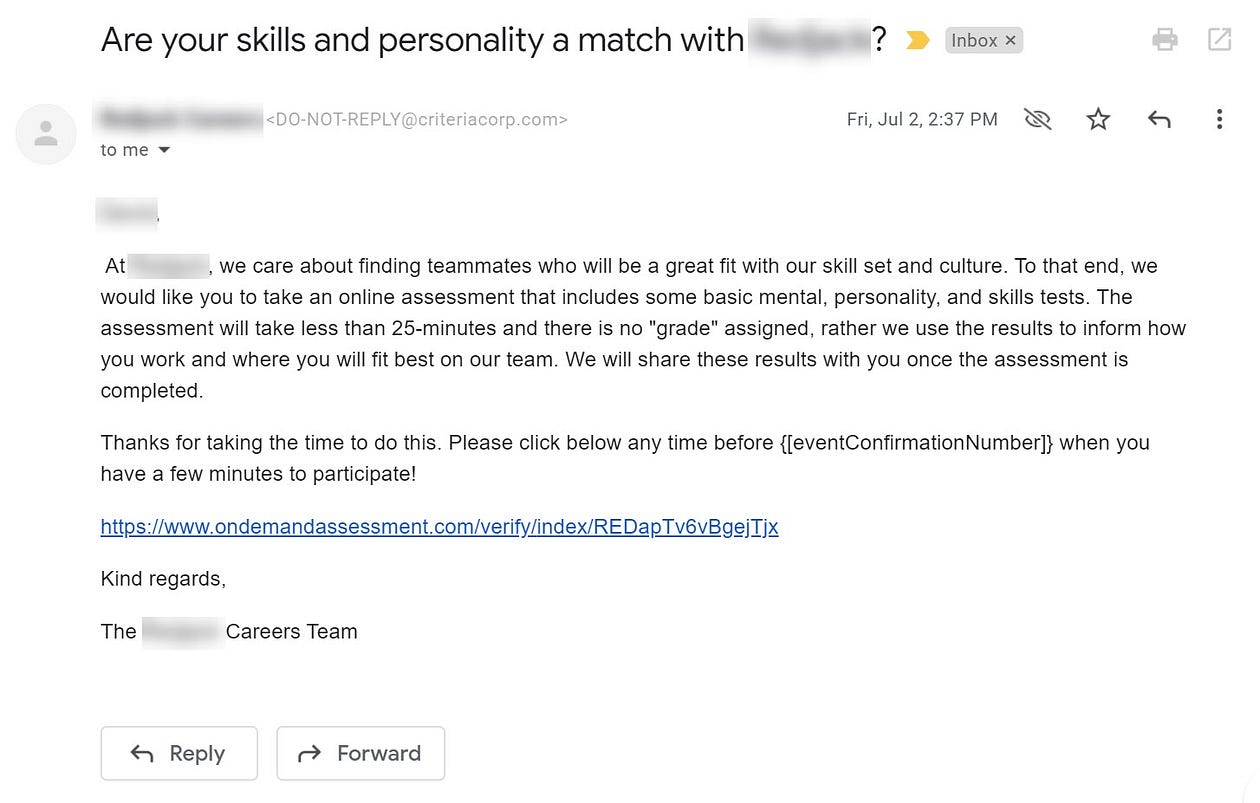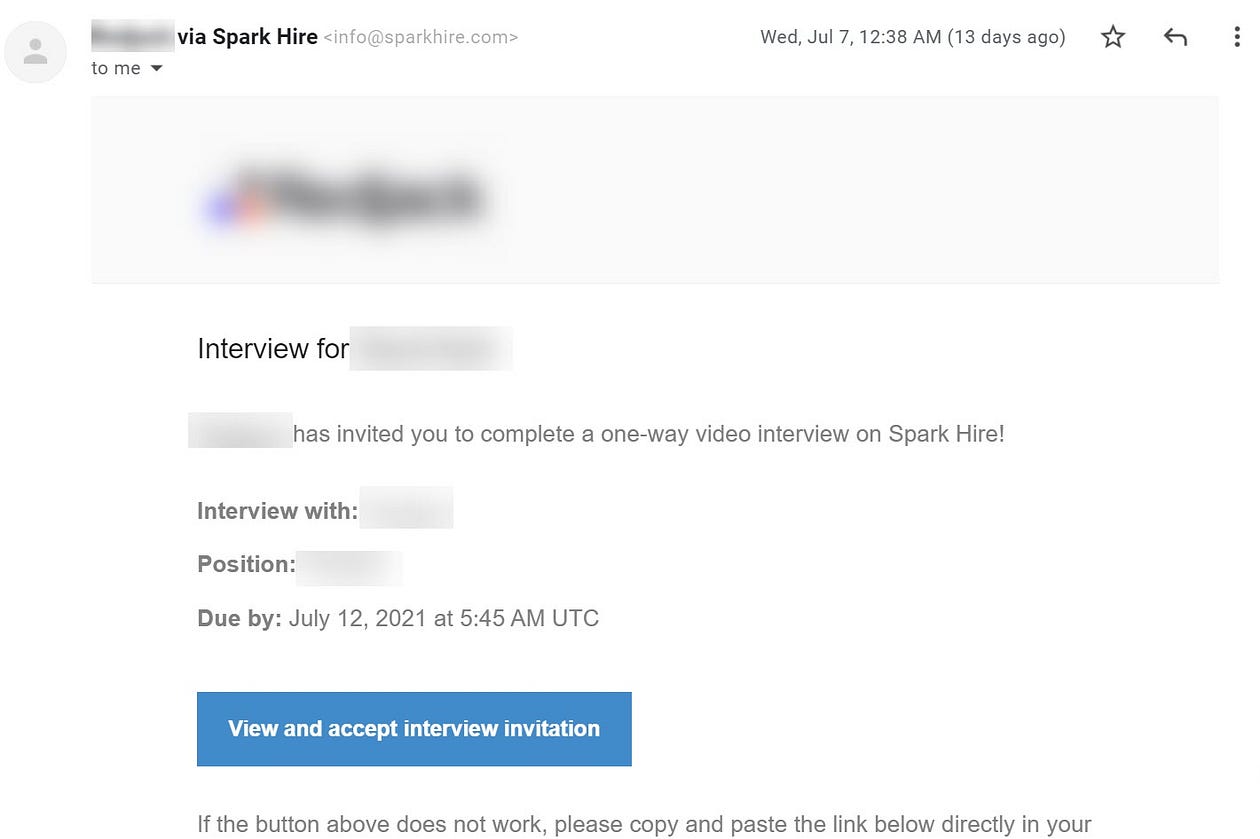Never has it been easier for job-seekers to apply for open positions. LinkedIn’s “Easy Apply” feature enables a candidate to verify a few auto-populated fields, attach a resume, and click “Apply.” Companies offering these easy applications are undoubtedly inundated with them and guaranteed to receive scads of resumes from unqualified and/or disinterested candidates.
Q. What’s a poor Human Resources professional to do?
A. Separate the wheat from the chaff.
With the Hiring 1.0 technology of yore, companies filtered qualified from unqualified candidates by scanning resumes into a database and searching for specific keywords. Pity the fools who neglected to include the keywords because the system would filter out their resumes, qualifications notwithstanding. Ultimately, candidates upped their game in this applicant-employer arms race and started stuffing their resumes with every known technical acronym and buzzword to avoid becoming the chaff. For humans reading these enhanced resumes, it was hard to separate actual experience from the technical gobbledygook littering the documents.
Hiring 2.0 digital recruiting platforms include one-way interviews, pre-employment assessments, and personality tests. Companies inundated with resumes or simply enamored of this new technology use these tools to conduct initial hiring steps without involving employees. The calculus of modern warfare changes as autonomous weapons systems replace soldiers on the battlefield. Risks are evaluated differently as war becomes more video game-like and human lives aren’t on the line. Similarly, companies are free to indiscriminately deploy their digital hiring tools because there’s no human employee cost.
A Typical Hiring 2.0 Workflow
- The candidate applies using LinkedIn EasyApply

2. The employer receives bushels of applications and asks candidates to complete a digital personality and skills assessment. The job candidate receives an automated email explaining the assessment and clicks the supplied link to commence the tests.

3. The applicant completes the two assessments. The skills portion may consist of spatial puzzles, simple math problems, and identifying errors in blocks of text. The personality assessment contains questions to assess work habits, attitudes, outlook, temperament, and interaction style.

4. The candidate receives another automated email requesting a one-way video interview. One-way interviews are also called asynchronous interviews because the candidate answers questions on video without a company interviewer on the other side. These one-way interviews can occur at a candidate’s convenience.

5. The job seeker chooses a time of sufficient sobriety and rest to answer questions on video. The company often has a representative prerecord a video asking each question. The job seeker is given time limits to answer each question and typically tries a few times and chooses the best recording to submit.
Epiphany #1: One-Way Interviews Are More Beneficial For Employers Than Applicants
In the video above, Spark Hire shows a recruiter saving time by reviewing one-way video interviews instead of holding in-person interviews with a long line of candidates. It’s certainly true that a recruiter saves time by watching a 10–15 minute interview instead of engaging in the chit-chat and give and take of an actual interview, like answering candidates’ questions.
Although a two-way interview may require slightly more time than a one-way interview, a skilled recruiter will glean higher-quality data points. The spontaneous chit-chat at the beginning or end of an actual two-way interview often reveals as much as the nuts and bolts questioning of the candidate. Furthermore, a candidate’s questions, while ostensibly to enable them to better understand the company, may expose a candidate’s priorities — like “Do you have free snacks?” versus “What are your sales channels?.”
In the following bullets, Spark Hire insists that one-way interviews benefit candidates as well as employers. I’ve italicized my rejoinders of refutation.
- You have control of when (for a one-way) and where the interview takes place. So what? Virtually all introductory interviews occur as either phone calls or video calls. Candidates already have control of the when and where.
- You will be on a level playing field with other candidates for the job. They’re putting a positive spin on it, saying that everyone answers the same questions and isn’t subject to the whims of a recruiter. The darker side of these interviews is a company’s ability to anonymously discriminate against people based on attractiveness, age, ethnicity, and virtually anything else the camera sees or the microphone records. Note: One-way interviews are the exact opposite of blind auditions, which led to better gender equity in orchestras.
- You have the opportunity to let your personality shine. Nope, not if one is asked questions and given a max of one or two minutes to answer. One’s personality more easily shines when there’s a back-and-forth rapport with an actual person.
Epiphany #2: Inject Humanity Before Candidates Get Pissed Off
Based on the workflow above, the candidate spends approximately an hour completing the personality and skills assessments and the one-way interview. Not a huge time commitment. Nonetheless, no person-to-person contact has occurred. Even the emails to the candidate requesting the assessments and one-way interview are automated. Like modern warfare, a company can blindly make these requests of all applicants because it costs them so little. Overcoming candidates’ initial negative impressions of a company is the hidden cost of indiscriminately asking candidates to give of themselves without receiving anything in return.
Problems arise in any relationship when one person puts more effort into it than the other. Similarly, job seekers may become cranky or completely turned off when they sense they’re putting more effort into their candidacy than the hiring company.
Here’s an example of the unevenness of the hirer/hiree relationship: Engineering teams frequently ask technical candidates to complete coding exercises to verify their bona fides. Technical staff may even refuse to view a resume before receiving a completed coding exercise. A candidate may be loath to undertake any work before knowing there’s legitimate interest from the company. The winner in these standoffs is usually the one in the power position, determined by whether it’s a buyer’s market or a seller’s market. When there are jobs aplenty for technical people, they may be especially unwilling to expend extra effort and engineering teams may be forced to actually speak to candidates before asking them to perform coding tests.
The question for companies using Hiring 2.0 tools is when to introduce humans into the workflow? Injecting humanity too early may overwhelm the company with the volume of candidates and necessitate hiring additional recruiters. If a company waits too long to have a real, live person interact with applicants, they risk alienating candidates who want to feel some love.
Epiphany #3: The Dubious Value of Pre-Employment Assessments
It’s easy to subject a candidate to a simplified Tetris game and score how fast they manipulate two-dimensional objects. A high score may indicate advanced spatial ability, but it may just reflect a candidate’s muscle memory from playing lots of Tetris. Should a low score on a spatial test really serve as a red flag in the hiring process? Probably not.
A personality assessment can reveal interesting traits that may contraindicate a person for a position — like a salesperson who hates talking to people or a project manager who dislikes collaboration. Still, by answering vague questions on a scale of one to five, these assessments are imperfect personality measures. Even if candidates answer perfectly honestly, which they do not, the results of a self-assessment are highly questionable. In all likelihood, candidates game their responses to correlate with the perceived expectations for a position, e.g., a high degree of extroversion for a salesperson.
Why bother with an automated personality assessment when humans are great judges of character? Give a talented recruiter ten or fifteen minutes with a candidate and the recruiter will nail the personality points like introvert/extrovert, conscientious/slacker, cooperative/selfish, without breaking a sweat. And the recruiter will probably be correct, unlike the automated personality assessment. The height of technological misuse is outsourcing tasks for automation that interviewers always do better themselves. If humans could plow fields better than yoked oxen, no one in medieval Europe would have bothered to domesticate animals for farming.
Finally, it’s pointless to match a personality type to a position since there’s no real science equating personality to job success. Attempting to game how an applicant’s personality will mesh with a preexisting team is a fool’s errand.
The pressure of timed testing plays to some people’s strengths but exposes weaknesses in others. Does this mean that those who score low should be filtered out of the process? Of course not. Every healthy company needs a balance of all types — doers, thinkers, dreamers, feelers, hares, tortoises, introverts, and extroverts. All employees should share these common denominators: a drive for excellence and a passion for the company’s mission – neither of which is measured by pre-employment tests.
The danger of pre-employment assessments is the seductive metrics, charts, and graphs that rank candidates give the employer a feeling of control, tying a ribbon around a process that’s anything but neat. Companies that put too much stock in these metrics invariably reject great candidates.
Epiphany #4: Actual Recruiting Costs Aren’t Well Understood
Customer Acquisition Cost is such a commonly tracked metric that it’s a well-known acronym — CAC. Oddly, most employers have little understanding of their EAC — Employee Acquisition Cost. Companies that perform in-house recruiting and hiring may involve so many people in the process that it’s challenging to account for everyone’s time and determine actual costs.
Many companies that refuse to pay professional recruiter fees, often 20–25% of an employee’s first-year salary, end up performing the same legwork but do it less efficiently. Companies that reject professional recruiters don’t have to shell out EAC money because the work is undertaken by people already on the payroll. However, the work these employees aren’t performing because they’re busy recruiting is a lost opportunity cost. Just guessing, but lost opportunity cost probably equals 20–25% of a new hire’s first-year salary.
Epiphany #5: Like ’em or Not, Hiring 2.0 Tools Are Here to Stay
Our species is hard-wired to build a better mousetrap. When it comes to recruiting, the better mousetrap is anything that streamlines the process, enabling faster hiring with less effort. Ask any recruiter and they’ll say their job combines art and science. In this era of metrics, data, and über-quantification, the pendulum currently swings toward the science of recruiting and away from the art.
Much about the shiny, new hiring 2.0 tools make them irresistible to HR teams. However, it’s difficult to convincingly argue that these tools represent a better mousetrap or have a positive return on investment. Simply because an object is shiny and new doesn’t make it better.
Epiphany #6: Recruiters Aren’t an Endangered Species
Workers fear imminent Artificial Intelligence-fueled job elimination across wide swaths of every industry. Artificial General Intelligence (AGI), the ability of an AI agent to learn, perceive, and think like a human, is the stuff of Kurzweilian Science Fiction and may never become real. Until AI reaches AGI, AI agents cannot usurp jobs that require humanity like writers, therapists, and recruiters.
A recruiter’s job is to evaluate a candidate’s hard and soft skills to determine if there’s a fit. An intangible but crucial element of hiring transcends soft or hard skills. Hiring often hinges on a YES to the question, Do we like one another enough to want to work together? The only way to assess chemistry is through artful, not scientific, recruiting.
Final Thoughts
Hiring 2.0 tools are a solution to a self-imposed problem — a high volume of applicants. Companies can easily reduce the number of candidates by making the application process more arduous. A self-selecting pool of applicants will apply if companies ask for more upfront, like requiring cover letters and requesting answers to specific questions. That bushel of resumes will be reduced to a mere peck of resumes — quality over quantity.
